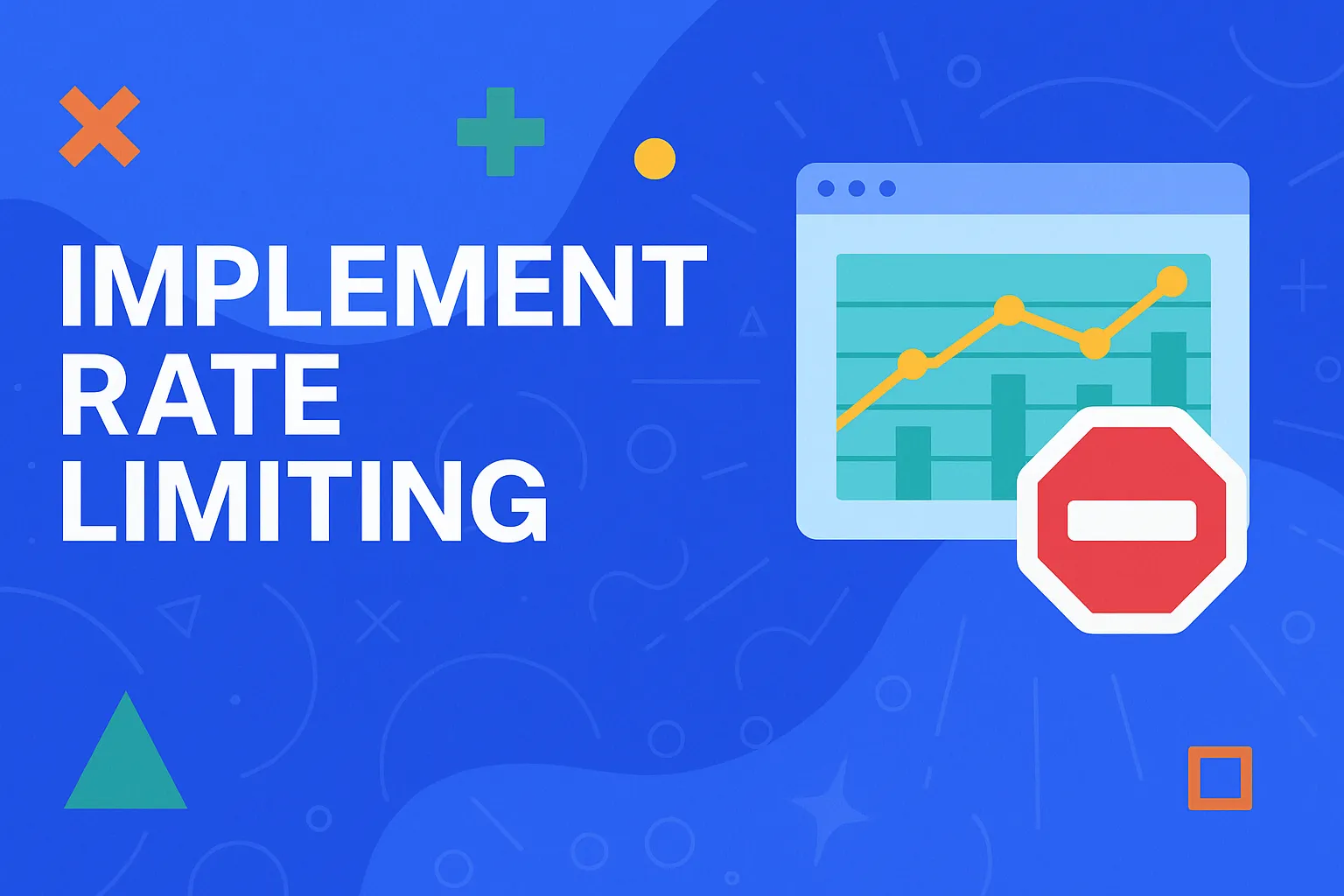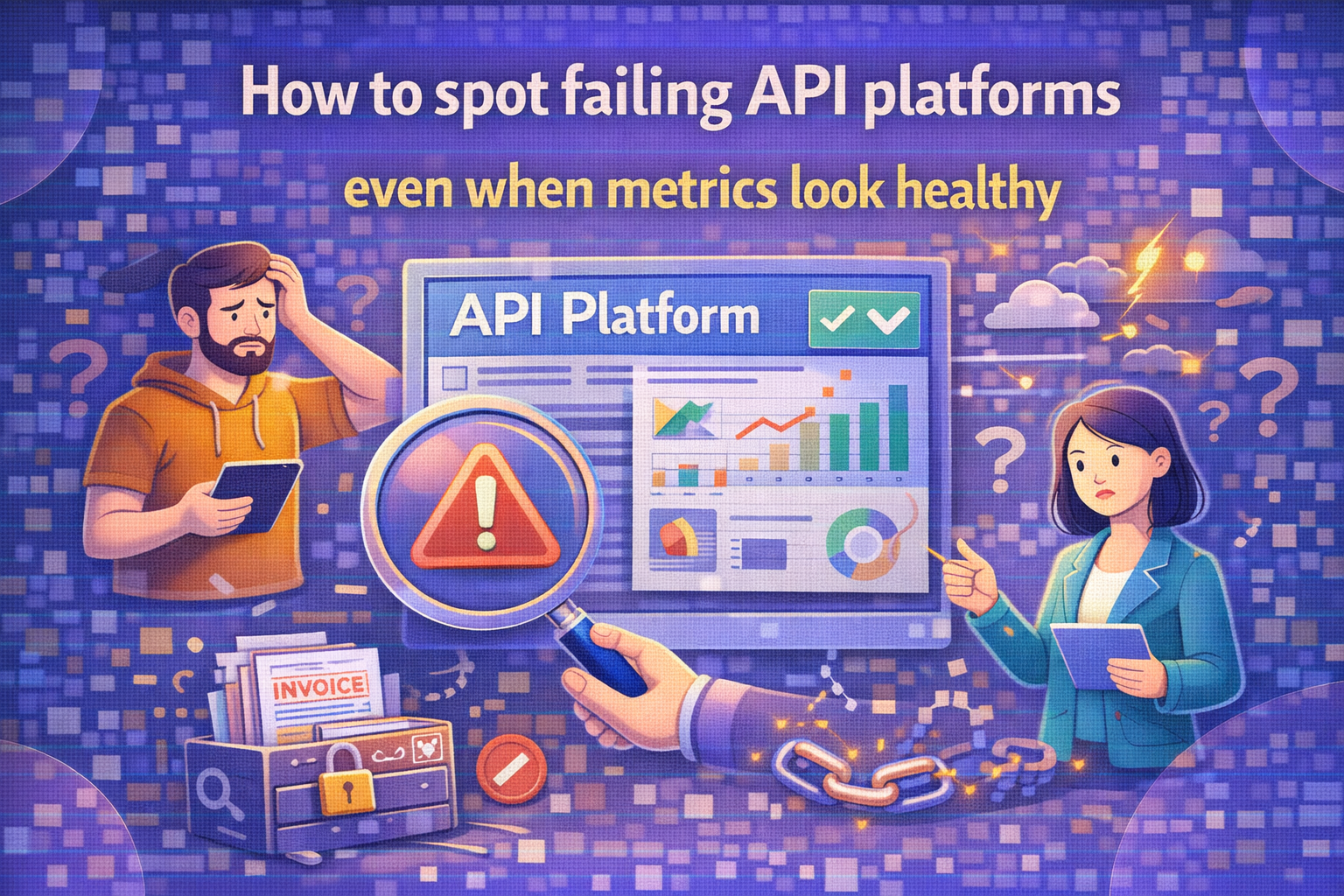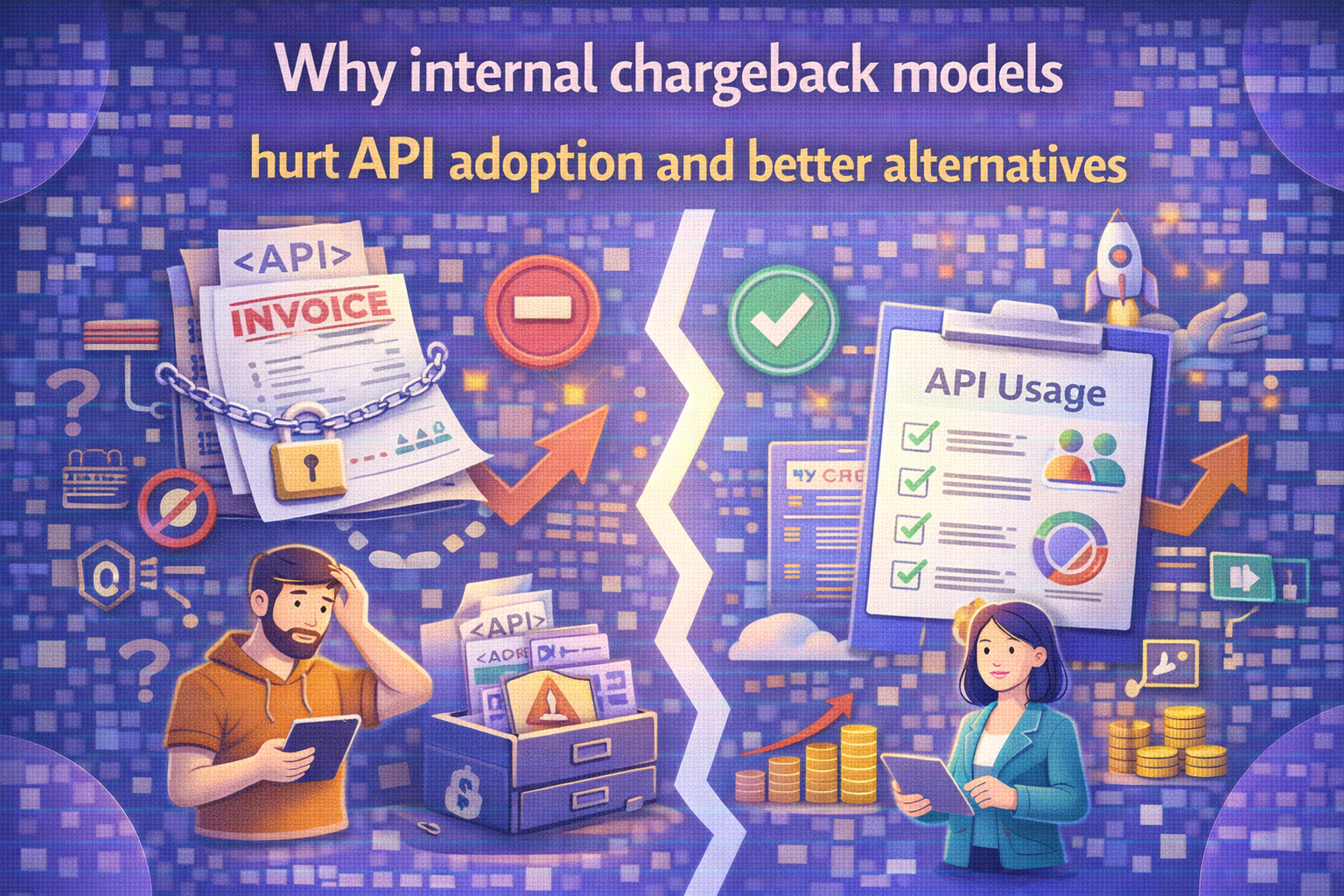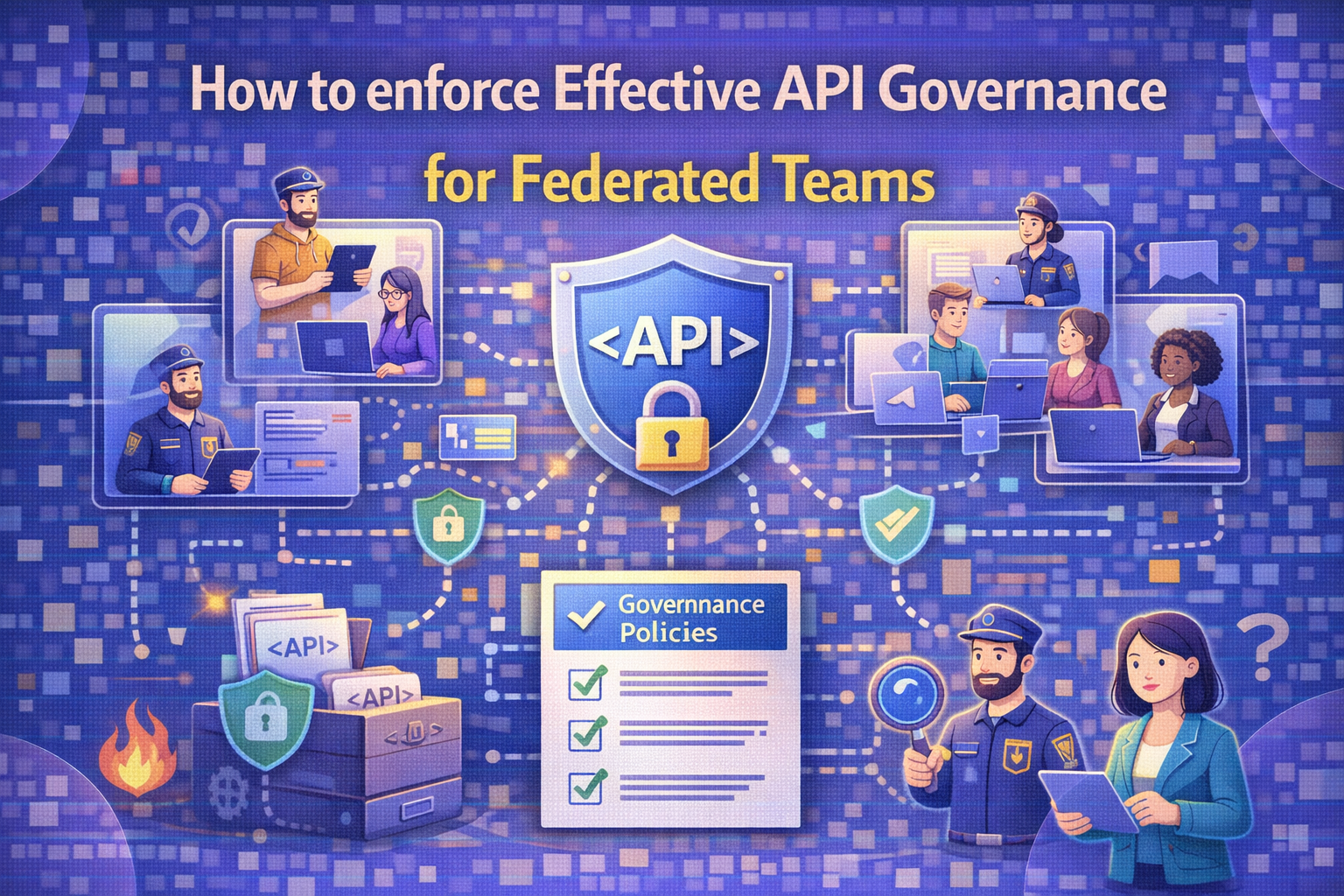
APIs that lack rate limiting become easy targets for credential stuffing, pricing scraping, or accidental DDoS from misconfigured clients. In fintech APIs, for instance, a missing limit can allow bots to hit account balance endpoints thousands of times per second. In internal systems, a microservice calling another without limits can crash shared infrastructure, even if unintentionally.
Rate limiting addresses these risks by enforcing request ceilings per client, API key, or IP address, within a fixed window or adaptive model. But it’s not just about blocking traffic. Smart rate limiting lets you prioritise trusted clients, offer higher throughput to premium users, and shape how resources are accessed under load.
Implementation varies widely. Some teams use NGINX or Envoy with Redis for global counters. Others configure policies in API gateways like Apigee or AWS API Gateway. Rate limits also differ for internal, partner, and public APIs, each with its own threat models and usage patterns.
In this blog, we’ll go deep into how rate limiting actually works, which methods to choose, where to enforce it, and how to avoid common traps, like relying on IP-based rules or causing hard cut-offs that break critical workflows.
What is rate limiting?
Rate limiting is the process of controlling the number of requests a client can make to an API within a specified time frame. It acts as a gatekeeper, defining how many requests are allowed per second, minute, or hour, based on a key like IP address, user ID, or API token. When a client exceeds the allowed limit, the API typically responds with a 429 Too Many Requests status, optionally including headers to indicate when the client can try again.
At a technical level, rate limiting is enforced using counters and time-based windows. For example, a fixed window counter may allow 1000 requests per minute, resetting at the start of every minute. More advanced systems use sliding windows or token buckets to smooth out traffic spikes while maintaining fairness. These mechanisms are often backed by shared data stores like Redis to support distributed environments.
The purpose of rate limiting isn’t just to block abuse, it’s to maintain system stability under load, ensure equitable access for all users, and enforce usage tiers or service-level agreements (SLAs). Without it, APIs are susceptible to overuse from buggy clients or malicious actors, which can degrade performance for everyone. Well-implemented rate limits are both protective and strategic in managing API traffic.
Advantages of rate limiting in APIs

Rate limiting offers more than just protection; it helps enforce fairness, control infrastructure costs, and shape how APIs are consumed. When implemented well, it becomes a core component of your API’s scalability and reliability strategy.
- Protects backend infrastructure from overload: Rate limiting prevents backend services from being overwhelmed by high request volumes, whether from legitimate clients or abuse. By capping usage, it ensures core systems like databases and authentication services aren’t taken down by traffic spikes or looping client logic.
- Mitigates abuse and brute-force attacks: Without limits, APIs can be exploited for credential stuffing, card testing, or scraping. Rate limiting acts as a first line of defence by slowing down or blocking clients that behave unusually, buying time for more advanced detection or blocking mechanisms.
- Enables usage-based pricing and tiered access: APIs with commercial models often offer different quotas to free, standard, and premium users. Rate limiting enforces these tiers automatically, ensuring that each user class receives only the level of access they've paid for.
- Improves overall reliability and user experience: When one client misbehaves, it can degrade performance for everyone. By isolating clients and enforcing limits individually, rate limiting preserves stability and ensures a consistent experience across your user base.
- Provides clear usage boundaries and transparency: Rate limiting helps set clear expectations. When clients receive headers like X-RateLimit-Remaining, they know how close they are to their limits and can back off or retry later, rather than running into unpredictable errors.
- Optimises cloud and infrastructure spend: Uncapped API traffic can lead to unpredictable cloud bills, especially with metered services like Lambda, Redis, or egress-heavy workloads. Rate limiting keeps usage within planned thresholds, turning variable costs into predictable opex, directly improving ROI on infrastructure investments.
- Enables monetisation through usage-based pricing: Rate limiting underpins API monetisation. By offering defined quotas across free, standard, and enterprise tiers, companies can capture value from heavy users while protecting resources for lower tiers. This turns technical control into commercial leverage, boosting API-driven revenue.
- Reduces cost of outages and downtime: An API outage triggered by traffic spikes can result in SLA penalties, lost customer trust, and firefighting overhead. Rate limiting reduces the probability and blast radius of such incidents, saving both direct incident costs and long-term churn.
How does rate limiting work?
Rate limiting works by tracking how many times a specific client, usually identified by an API key, user ID, or IP address, sends requests to an API within a defined time window. Each incoming request is checked against a stored counter that logs how many requests that client has already made in the current window.
If the client is within their quota, the request proceeds normally. If they’ve exceeded it, the API responds with a 429 Too Many Requests status, often including headers like Retry-After or X-RateLimit-Reset to guide the client on when to retry.
At the heart of rate limiting is a combination of two elements: a request counter and a timing mechanism. These determine how many requests are allowed and when the counter resets. There are several ways to implement this logic, each with trade-offs:
- Fixed window: Resets the counter at regular intervals (e.g. every minute). Simple, but can be vulnerable to burst traffic at window edges.
- Sliding window: Evaluates usage over a rolling time frame (e.g. last 60 seconds), providing smoother enforcement.
- Token bucket: Clients are given tokens at a fixed rate; each request consumes one. This allows controlled bursts while maintaining overall limits.
- Leaky bucket: Queues incoming requests and processes them at a steady rate, effectively smoothing spikes.
Whether you enforce rate limiting also matters. For public-facing APIs, it's typically handled at the gateway or reverse proxy layer (using tools like Helix, Apigee, Kong, or NGINX) for maximum performance. For internal APIs, rate limits might be applied within the application code or coordinated via a distributed store like Redis to keep counters consistent across instances.
Rate limiting isn’t just about counting requests; it’s about making decisions at speed, under load, and with fairness in mind. It plays a critical role in shaping how APIs behave during peak usage and protects services from both abuse and unintentional overuse.
Different types of rate limiting
Not all rate-limiting strategies are created equal. The type you choose affects how smoothly your traffic flows, how fair your system is to users, and how well your API handles bursts or spikes. Here are the most commonly used rate-limiting methods, and when to use them.
1. Fixed window
This is the simplest approach. A time window is defined (e.g. one minute), and a counter tracks how many requests a client makes during that window. Once the limit is reached, additional requests are blocked until the window resets.
Example: Allowing 100 requests per user per minute, resetting at the top of each minute.
2. Sliding window
Instead of resetting at fixed intervals, this method evaluates requests within a rolling time window (e.g. the last 60 seconds). It provides smoother rate enforcement and avoids edge-case spikes where users send a burst just before and after a window resets.
Example: If a user made 80 requests in the last 60 seconds, they can only make 20 more right now.
3. Token bucket
Each client gets tokens that refill over time. Each request consumes a token. If tokens run out, the request is denied. This method allows short bursts of traffic while staying within the overall limit.
Example: A bucket refills 10 tokens per second, and the user can burst up to 50 requests if tokens are available.
4. Leaky bucket
Requests are added to a queue (the "bucket") and processed at a constant rate, like water leaking from a hole. If too many requests arrive too quickly, the bucket overflows and excess requests are dropped.
Example: An API that processes 5 requests per second regardless of burst traffic, ensuring steady load on the backend.
5. Concurrent rate limiting
This limits how many simultaneous requests a client can make at any given time, rather than over a time window. It’s useful for APIs where concurrency has a higher system impact than frequency.
Example: A file upload API that allows only 3 parallel uploads per user at a time.
When & where to enforce rate limiting (Gateway vs App vs Mesh)
Rate limiting isn’t just about how it’s done, but also where in the architecture you apply it. Depending on your API’s exposure, traffic pattern, and system design, rate limiting can be enforced at the gateway, inside the application, or across a service mesh. Each layer offers different trade-offs.
1. At the API gateway (external traffic control)
This is the most common and efficient place to apply rate limits for public or partner APIs. Gateways like Apigee, Kong, or AWS API Gateway intercept traffic before it reaches the backend, reducing unnecessary load early. They support rules per IP, user, or API key, and often include built-in analytics, usage plans, and response headers.
When to use: For external APIs, multi-tenant platforms, or tiered monetisation models.
2. In application code (custom logic and internal enforcement)
Sometimes, rate limiting needs to consider business context, like account type, user permissions, or custom access policies. In such cases, enforcing limits directly in app logic (often with Redis or local counters) allows full flexibility. However, it adds complexity and latency.
When to use: For internal APIs, or when you need fine-grained, domain-aware rate limits.
3. Across the service mesh (service-to-service communication)
In microservices architectures using service meshes like Istio or Linkerd, you can apply rate limits between services, even if they don’t pass through a central gateway. These mesh-based policies are essential when internal APIs need isolation, fairness, or protection against cascading failures.
When to use: For east-west (internal) traffic in large distributed systems, especially when you want policy enforcement without changing application code.
In practice, many teams combine these layers:
- Gateway limits for public API control
- App-level limits for contextual enforcement
- Mesh limits for internal service reliability
Choosing the right enforcement point depends on who your consumers are, what kind of abuse you're trying to prevent, and how distributed your infrastructure is.
Rate limiting vs API throttling: What’s the difference
The terms “rate limiting” and “throttling” are often used interchangeably, but they serve different purposes in API management. While both regulate traffic, their intent and behaviour under pressure vary. Here’s a clear comparison to help distinguish the two:
Step-by-step guide to implement rate limiting for APIs
.png)
Implementing rate limiting requires more than just blocking extra requests, it’s about enforcing limits fairly, transparently, and in a way that scales with your system. Here’s a detailed step-by-step guide to help you set it up properly:
1. Define your rate limiting policy
Start by deciding what to limit, requests per user, API key, IP address, or organisation. Set the limit thresholds (e.g. 1000 requests per minute) based on usage tiers or service-level agreements. You should also determine whether limits apply globally, per endpoint, or per resource.
2. Choose the appropriate algorithm
Select a rate limiting strategy that suits your traffic pattern. Fixed window is simple but may cause burst overloads. Sliding window offers fairer distribution. Token and leaky bucket algorithms help absorb traffic spikes while keeping throughput under control.
3. Select your enforcement layer
Determine where the limit will be enforced: at the API gateway, within your app logic, or in a service mesh. Gateways are ideal for external control; app logic gives more flexibility; service meshes help with internal service-to-service limits. Choose based on your architecture.
4. Implement a counter mechanism
Track request counts using an in-memory store like Redis or Memcached, especially in distributed systems. The counter should increment on each request and reset based on your chosen window. Avoid local counters if your API runs across multiple nodes.
5. Enforce the limit in real-time
Every time a request comes in, check the counter against the allowed quota. If under the limit, proceed; if not, block the request and return a 429 Too Many Requests response. Include rate limit headers to keep usage transparent for clients.
6. Handle blocked requests gracefully
Make it easy for clients to recover from rate limits. Use headers like Retry-After and provide clear error messages. For commercial APIs, guide users to upgrade their plan or adjust their integration to stay within limits.
7. Monitor, log, and alert
Track which clients hit their limits, when, and how often. Use observability tools to set alerts for suspicious spikes or repeated breaches. Logging helps identify abuse patterns and fine-tune your limits over time.
8. Test under load and refine
Before going live, simulate real traffic with tools like Postman, k6, or JMeter. Observe how your system handles bursts, how long it takes to reset, and whether limits are enforced accurately. Adjust thresholds as needed based on real-world performance.
Challenges and best practices in rate limiting
Rate limiting can seem straightforward, but real-world implementation is full of edge cases and operational trade-offs. From enforcing fairness to scaling counters under load, many teams underestimate the challenges involved. At the same time, following a few proven best practices can dramatically improve reliability and developer experience. Here’s a breakdown of the top challenges and best practices in rate limiting.
Challenges in rate limiting
- Handling distributed environments: In multi-node or cloud-native setups, enforcing limits consistently across instances is difficult. Without shared storage (like Redis), counters can desync, causing inaccurate enforcement or unfair throttling.
- Dealing with clock drift and resets: Time-window-based algorithms rely on synchronised clocks. Inconsistent server time or delayed resets can lead to inaccurate limits and race conditions during enforcement.
- Misidentifying the client: Relying solely on IP addresses or API keys can cause issues, especially with NAT, shared proxies, or mobile clients. Misidentification leads to unfair blocking or quota misuse.
- Lack of burst tolerance: Rigid fixed-window limits may reject legitimate short bursts of traffic (e.g. login spikes at 9 AM). Without burst-aware algorithms like token bucket, user experience can suffer unnecessarily.
- No visibility for clients: APIs that silently block requests or don’t expose rate limit headers cause confusion for developers. Without visibility, clients can’t throttle themselves or plan retries.
- Resource-intensive counter storage: Maintaining counters for millions of users or keys can consume memory, especially in high-throughput APIs. Scaling these systems requires efficient eviction, compression, or sharding strategies.
Best practices in rate limiting
- Use shared, low-latency storage for counters: Implement rate limit tracking using Redis, Memcached, or similar in-memory stores. This ensures consistency across distributed nodes and avoids race conditions.
- Always expose rate limit headers: Include headers like X-RateLimit-Limit, X-RateLimit-Remaining, and Retry-After in responses. This keeps clients informed and allows them to throttle proactively.
- Choose the right algorithm for your use case: Don’t default to fixed windows. Use sliding windows for fairness, token buckets for burst tolerance, and leaky buckets to smooth flow across time.
- Separate limits by API tier or context: Define different limits for free users, paid tiers, or internal traffic. This gives flexibility to prioritise valuable clients while protecting shared infrastructure.
- Log breaches and monitor patterns: Track which users hit limits, how often, and when. Logging and observability help detect abuse, misbehaving integrations, or opportunities to refine your rules.
- Fail gracefully with actionable errors: When rejecting requests, respond with meaningful messages and retry instructions. This helps developers recover smoothly and builds trust in your platform.
Final thoughts
Rate limiting is a strategic layer that balances performance, security, and user experience. Whether you’re protecting backend systems, enforcing usage tiers, or preparing for scale, thoughtful rate limiting ensures your APIs stay resilient under pressure.
But it’s not a one-size-fits-all solution. The right approach depends on your architecture, traffic patterns, and business model. Choosing the right algorithms, exposing clear feedback to clients, and continuously monitoring usage are key to getting it right.
Done well, rate limiting not only safeguards your infrastructure, it builds trust with developers and enables sustainable API growth.
You’ve spent years battling your API problem. Give us 60 minutes to show you the solution.
.svg)

%20(1).png)




